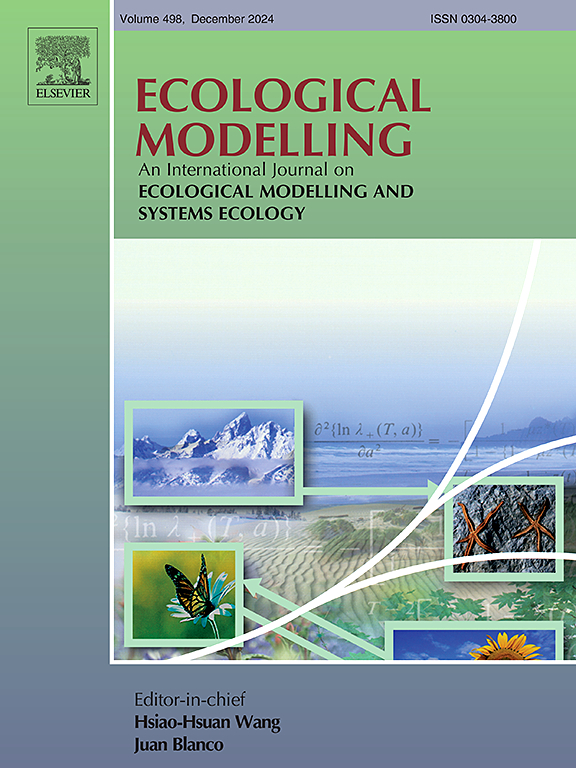拉脱维亚波罗的海地区有花序橡树的径向生长模式
IF 3.2
3区 环境科学与生态学
Q2 ECOLOGY
引用次数: 0
摘要
对有花序栎树的生长变化进行了预测,因此需要准确的参考生长预测来评估管理和气候变化对该树种生长性能的影响。该研究旨在测试常见的树木生长模型,并校准波罗的海地区有花序橡树的第一个径向生长参考模型。在恒定局地密度条件下,对8个人工林89株有花序栎树的178个增径芯进行了个体累积径生长重建。利用广义代数差分法(GADA)建立了6种不同的非线性固定效应生长模型,并对观察到的生长数据进行了拟合。在生物现实主义的背景下,通过评估模型拟合统计来进行最佳模型选择。由于成熟的树龄和连续的直径数据,所有六种测试的径向生长模型都与观测到的径向生长吻合良好。基于拟合统计和预测生长曲线的真实性,Strand模型在预测波罗的海东部地区有花序橡树径向生长方面表现出最佳的性能。这项研究代表了有花序的橡树径向生长的GADA模型的极少数已知的努力之一。拟合的径向生长参考模型可进一步作为评估气候变化和管理对该地区物种未来生长影响的基础。本文章由计算机程序翻译,如有差异,请以英文原文为准。
Radial growth models for Pedunculate Oak in the Baltics, Latvia
Changes of growth in pedunculate oak Quercus robur L. are anticipated, hence accurate projections of reference growth are needed to evaluate effects of management and climate change on performance of the species. The study aimed to test common tree growth models and calibrate the first radial growth reference model for pedunculate oak in the Baltics. Individual cumulative diameter growth was reconstructed from 178 increment cores sampled from 89 pedunculate oak trees growing in eight plantation stands under constant local density. Six different nonlinear fixed-effects growth models derived using the Generalized Algebraic Difference Approach (GADA) were fitted to the observed growth data. The best model selection was made by evaluating model fit statistics in context with biological realism. Due to mature tree age and continuous diameter data, all six tested radial growth models showed a good fit to observed radial growth. Based on fit statistics and the realism of the projected growth curves, the Strand model showed best performance for predicting radial growth of pedunculate oak in the Eastern Baltic region. This study represents one of the very few known endeavours of the GADA modelling for radial growth of pedunculate oak. The fitted radial growth reference models can further serve as the basis for assessment of the impacts of climate change and management on the species' future growth in the region.
求助全文
通过发布文献求助,成功后即可免费获取论文全文。
去求助
来源期刊

Ecological Modelling
环境科学-生态学
CiteScore
5.60
自引率
6.50%
发文量
259
审稿时长
69 days
期刊介绍:
The journal is concerned with the use of mathematical models and systems analysis for the description of ecological processes and for the sustainable management of resources. Human activity and well-being are dependent on and integrated with the functioning of ecosystems and the services they provide. We aim to understand these basic ecosystem functions using mathematical and conceptual modelling, systems analysis, thermodynamics, computer simulations, and ecological theory. This leads to a preference for process-based models embedded in theory with explicit causative agents as opposed to strictly statistical or correlative descriptions. These modelling methods can be applied to a wide spectrum of issues ranging from basic ecology to human ecology to socio-ecological systems. The journal welcomes research articles, short communications, review articles, letters to the editor, book reviews, and other communications. The journal also supports the activities of the [International Society of Ecological Modelling (ISEM)](http://www.isemna.org/).
 求助内容:
求助内容: 应助结果提醒方式:
应助结果提醒方式:


